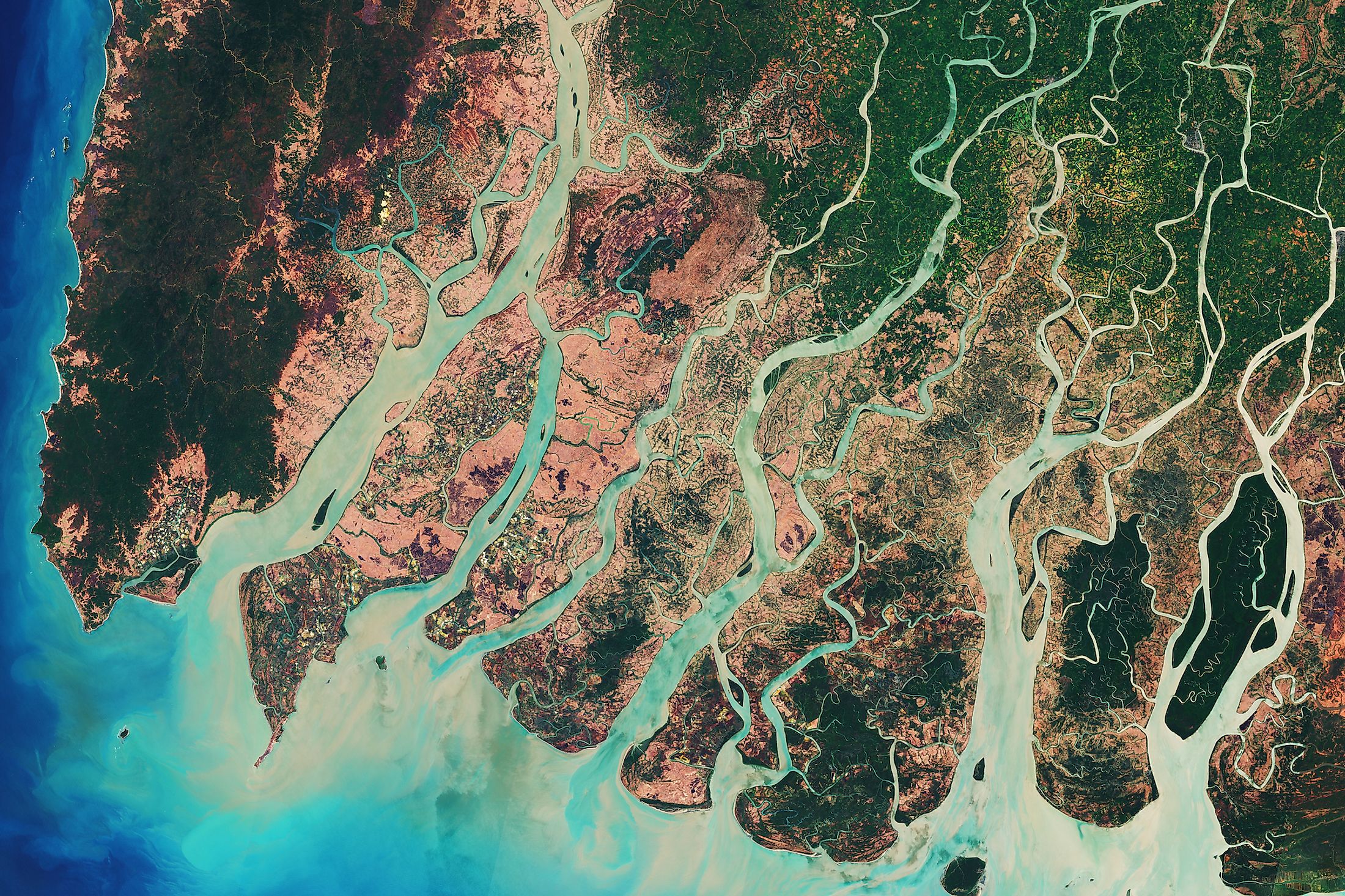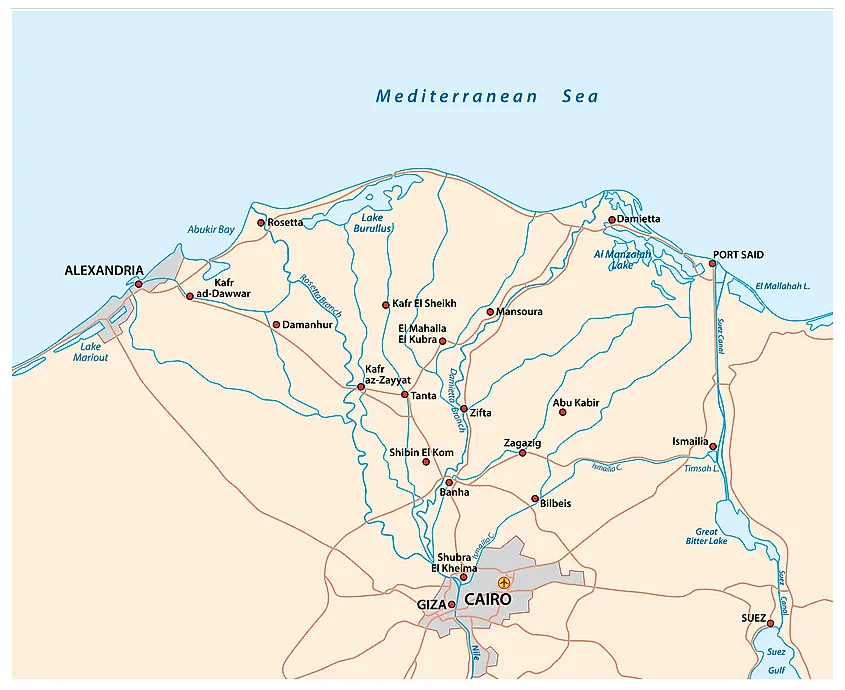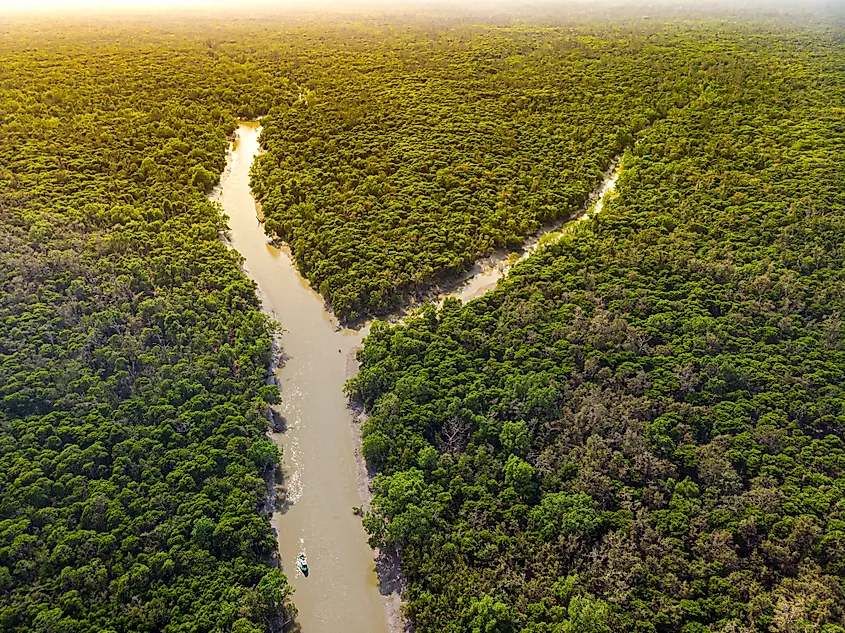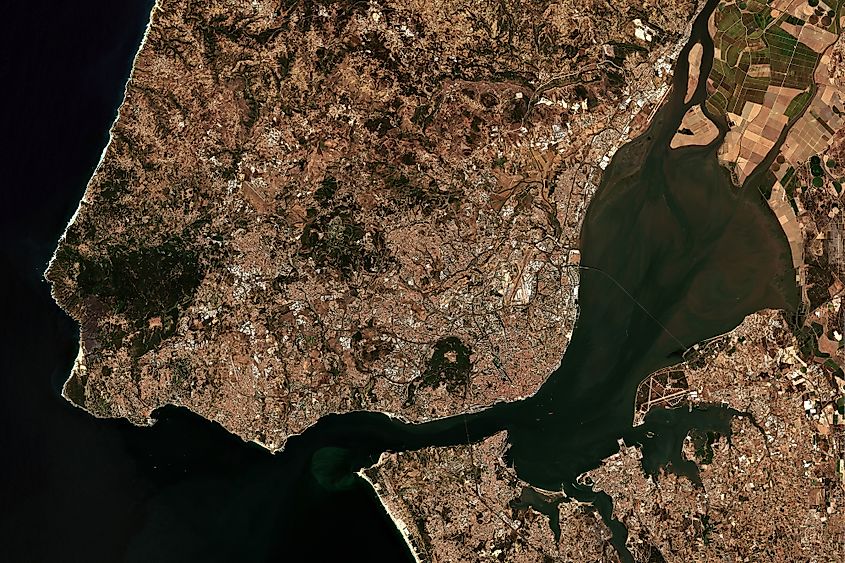
Formation of a River Delta
A river delta is formed when sediment in that river flows into another body of water, and begins to deposit that sediment there. As the river hits the width of a lake or ocean, the water flow quickly slows down, allowing for large amounts of sediment to drop from the water onto the river bottom. Over time, this sediment builds up, decreasing the gradient of the river bed and the floor of the river channel becomes closer to the floodplain. This can make the river channel unstable and prone to flooding.
When a river breaches its banks and floods, the water flow finds the fastest and easiest route downstream. Similarly, mouth bars – a bar of sand, gravel or heavy sediment in the mouth of a river can cause the flow of that river to divert around it, causing a forking. At the fork, sediment from the river builds up, which over time can also form delta conditions.
Over time, as the river continues to breach various distributaries (which appear like veins of the river) form. This gives many deltas their distinctive shape, although different types of deltas exist, based in part on how they were formed.
Types of River Deltas
Deltas can be categorized based on their shape, formation, or location. Four of the most common ways to distinguish delta types are as follows:
Wave-Dominated Deltas

Wave-dominated deltas are created and shaped by the movements of waves within the body of water in question.The waves influence the shape and formation of the river delta by shaping the sedimentary deposits near the river;s mouth. The waves move the deposits from the mouth opening towards the shore, preventing a bar from building up.
Because of this, these delta types don’t often have many distributary channels or veins, as the flow of the river into the larger body of water is not resisted. The waves also serve as a natural sifting and sorting mechanism because light fine grains are washed away in the waves, while heavy sediments are left behind.
One of the most well known examples of this type of river delta is the Nile, where it meets the Mediterranean Sea.
Tide-Dominated Deltas

Tide dominated deltas are somewhat similar to wave ones, as the movement of water in the delta helps to form the shape and type of river delta that is created, but the resulting shape is very different. In these cases, the rise and fall of the tide is what has the biggest impact. Tidal deltas often have many distributaries, as well as dendritic structures due to the presence of sandbars and ridges under the water. The changes in the tides can cause certain river branches to become filled or blocked by silt, resulting in the birth of a new distributary. Because of this, these deltas have many many veins and arms, as the constantly moving tide causes the delta to morph often.
The most well known tidal delta is the Ganges-Brahmaputra delta in India and Bangladesh.
Gilbert Deltas
The third type of delta is the Gilbert river delta. This occurs when coarse sediments are deposited at the river mouth. The term is named after geologist Grove Karl Gilbert, who coined this type of delta. These types of deltas are most commonly formed by mountain rivers which flow into fresh water lakes. The water flow from the mountain tends to carry larger denser sediments which are washed along in the river where they stop, forming blockades at the river mouth.
Estuarine Deltas

River deltas can also be estuarine, which means they are partly fresh water and partly salt water. In these deltas the river does not flow directly into the ocean, or salt water, but rather into an estuary at the river mouth. Estuarine river deltas include the Yellow River of China and the estuary of the Tagus River in Portugal.
Shape of a River Delta
When categorizing deltas by shape, there are a few common terms. They include fan or Arcuate Deltas which generally have an arch-like shape spreading from the river mouth; the similarly shaped Cuspate Deltas which tend to have more wave-induced arcs that point towards the sea; Bird-Foot Deltas which have wider spread distinct distributaries that form the triangular shape of a bird foot; and inverted deltas which appear like ‘backwards’ shaped distributary networks with a dominant stream leading towards the ocean.


 Users Today : 675
Users Today : 675 Total views : 464430
Total views : 464430